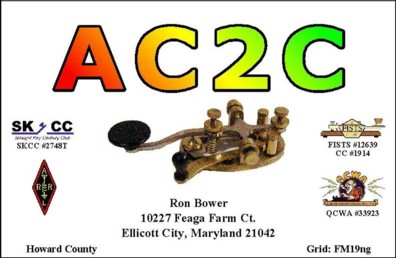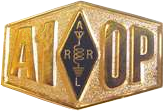|
As Morse Code key collections go, mine is very modest.
Please note that each image on this page is linked to a larger, high-resolution,
image. Smaller images are displayed here to enable faster loading. Clicking on any
image will result in a high-resolution image opening in a separate browser window.
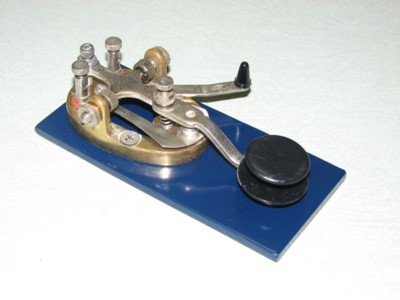
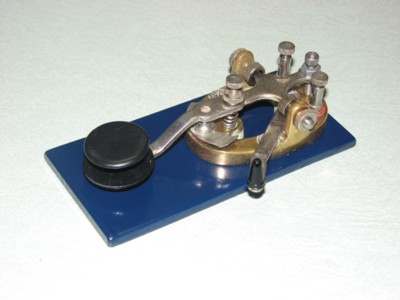
This is the first Morse Code key I ever owned. It was purchased at a small radio supply
store (Dare's Radio) on Genessee Street in Auburn, New York, sometime in 1964 or 1965.
It has a solid brass base and is mounted to a heavy piece of metal - I think it is a
piece of an old blank 19" bay plate. This key has taken a lot of pounding over the years
and has survived some minor modifications.
You might notice that the gap adjustment screw was misplaced somewhere in the past and
has been replaced with a plain screw and locking nut. Also, the original knob did not
have a "skirt" - I added a large washer many years ago.
This key has a permanent place on my desktop and is used often in straight key QSOs.
|
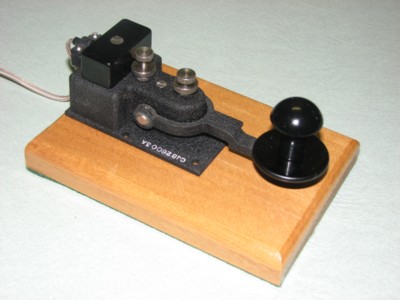
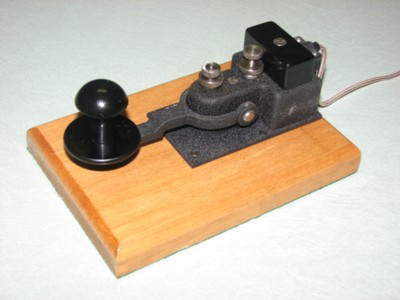
This is a "New Old Stock" Navy Flameproof Key purchased from J.H. Bunnell Company in
May, 2008. The key is mounted on a base made from Ancient Kauri timber that is aged from
30,000 to more than 50,000 years old.
Ancient Kauri wood is from forests buried at the time of the last Ice Age, which are
located on the Northern Island of New Zealand in the South Pacific Ocean.
The wooden base was made by and purchased from N2JNZ. George makes bases out of
a wide variety of woods and does a beautiful job of hand finishing the wood.
Flame Proof keys have covered contacts and were used by the military for CW Morse in
environments that may have had flammable gases present.
During the last three decades of production (ending in 1988), J.H. Bunnell & Co. was
the sole source of the Flame Proof key. J.H. Bunnell & Co. Flame Proof keys are stamped
"CJB-26003A".
|
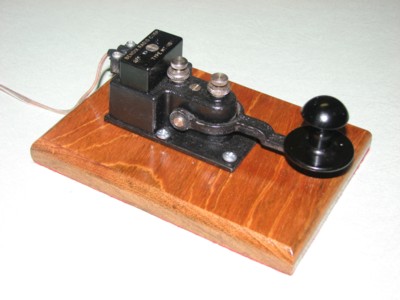
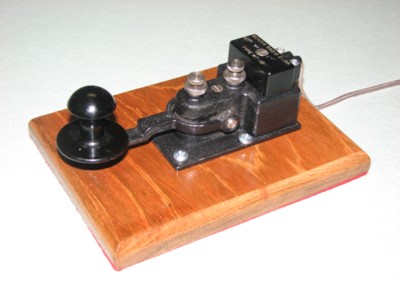
This Navy Flameproof Key was manufactured by Bendix Radio Corporation and
is stamped with "Type MT-11B" on the top of the wire connection cover.
This key, mounted on a Brazilian Cherry Base, was purchased from George,
N2JNZ, in July, 2008.
|
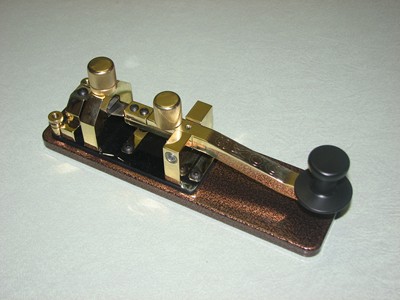
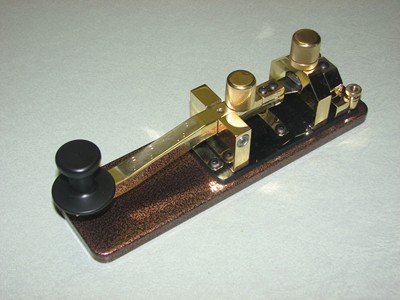
This is the most recent addition to my key collection - added in April, 2010.
Known officially as the NT9K Pro-Pump - SKCC Club Key 2010 Version,
the following description is from the manufacturer.
"It weighs in at about 4 pounds. The weight comes from all the half inch thick brass
parts and the half inch thick powder coated steel base. The key base measures 8-7/8th
by 2-1/2 inches. The skirt sits 1-1/2 inches off the desk and the top of the knob is
2-3/4 inches, from the desk to the top of the knob."
"The key makes use of ball bearings for a fast and smooth action. Balance and
physics of the lever's mass, insures precision feel and tactile response as the large
1/4 inch contacts come to close with just the right amount of flex and bounce. Careful
attention to the materials the contact strips are made from, gives this key a
professional action and may allow you to send for longer periods of time with
less fatigue."
|
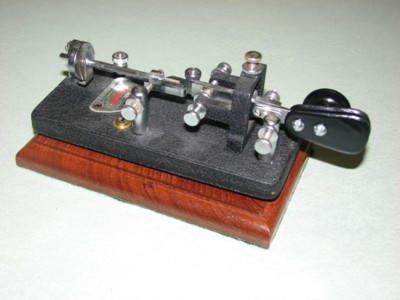
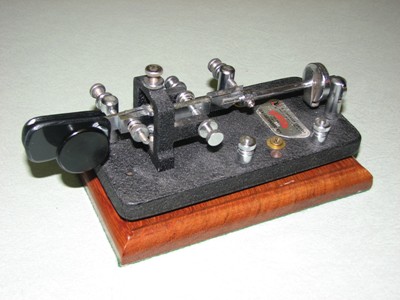
This E.F. Johnson Speed-X semi-automatic bug is from my early General Class days
in 1965-1966
Somewhere over the past 40+ years, the original paddle knobs were lost.
The paddle knobs shown here were formed from blanks purchased from
ArtifaxBooks.
Tom French at ArtifaxBooks was very easy to work with and the paddles were easy to
finish from the provided blanks.
The wooden base was made by and purchased from N2JNZ. George makes bases out of
a wide variety of woods and does a beautiful job of hand finishing the wood.
This key, unmodified, has always been a bit fast for me. There are two modifications
essential before I can properly handle this key:
- Mounting to a heavy, solid base, with non-skid padding
- Additional weight to slow the vibrating dit arm
|
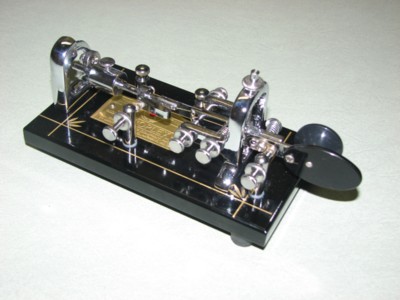
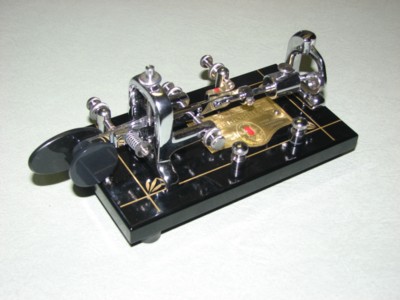
This is a new Vibroplex 100th Anniversary semi-automatic bug.
Vibroplex states that
"This key duplicates one of the most popular early Vibroplex bases, a "weathered" black
Japanese-like powdered coat finish with gold pin stripe border. Chromed upper parts
match the Standard Original Bug with black paddles and unique serial numbers."
I purchased this key in December of 2007 and have been able to handle it fairly well.
I currently run the key with one additional weight, purchased from Vibroplex, and have
it set to approximately 18 words per minute.
|
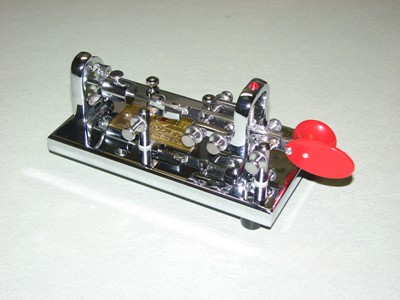
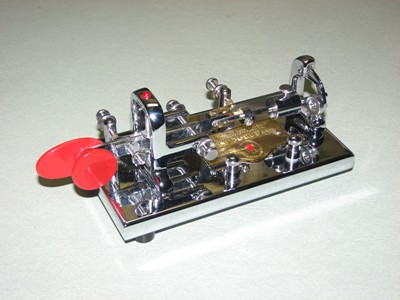
This is a Vibroplex Original Deluxe semi-automatic bug.
Vibroplex states that "The Vibroplex Original is a genuine
piece of history. First patented in 1904, the Original is still manufactured
today, using tools and dies very similar to those used by its inventor, Horace G.
Martin, when he revolutionized the telegraph industry with his "Bug." The Bug is
designed for code speeds ranging from approximately 20 wpm on the low side to 50+
wpm on the high side. Today, operators using the Original can have the same
experience pioneer telegraph and railroad operators felt over a century ago."
I purchased this key in January of 2009 through an eBay auction.
This key is my current "go to" bug and is, most likely, the bug I was using during
any recent QSO.
|
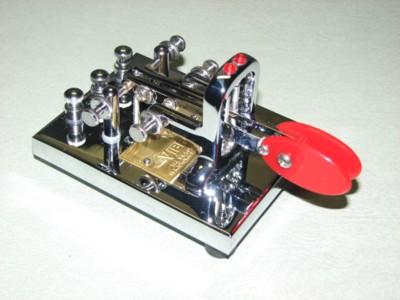
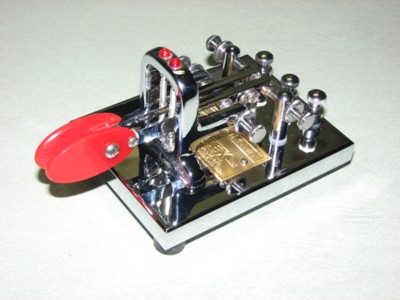
I purchased this set of Vibroplex Iambic Deluxe paddles from Ham Radio Outlet in
New Castle, Delaware, in July 2006 - the same day I purchased the Icom IC-756PROIII
HF Transceiver.
I used this set of paddles, in conjunction with the IC-756PROIII internal memory
keyer, for my first several months of operating with the new radio.
I did not get into the use of straight keys and semi-automatic bugs until I joined
the Straight Key Century Club (SKCC). The SKCC requires the use of manual keying
devices to count toward all of their awards.
I have a special set of cables that connect the dot and dash terminals together and
provide a single open/close signal for use as a side-swiper.
|
|
